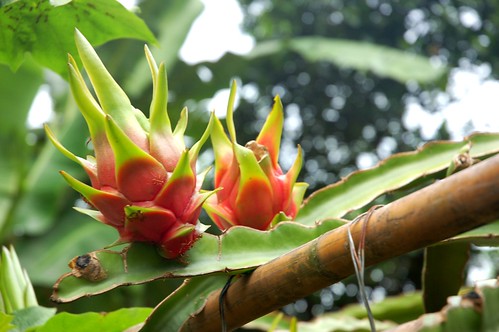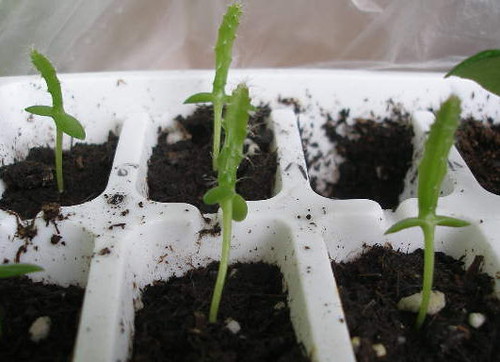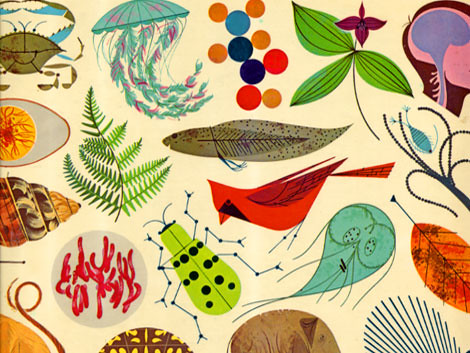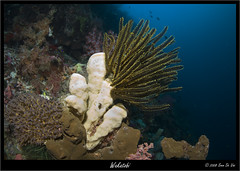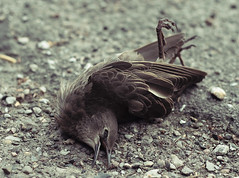BackgroundVery generally, a muscle consists of bundles of muscle fibers and the nerves that excite them. Muscle fibers are very long cells that contain bundles of myofibrils. And myofibrils consist of repeating units called sarcomeres. Sarcomeres can contract, and when many sarcomeres contract simultaneously their muscle does too.
So, our nested units from largest to smallest are:
muscle > muscle fiber > myofibril > sarcomereThe contracile mechanism of a sarcomere consists of thin filaments and thick filaments. Thin filaments are made of a protein called
actin and extend lengthwise into the sarcomere from either end. Thick filaments are made of a second protein, called
myosin which also extends lengthwise in the space between the thin filaments.
This diagram will help you visualize the arrangement of the thin and thick filaments within a sarcomere. Thick filaments also have regions called "heads" depicted as circles in the diagram.
ATP is a high energy mollecule and is the molecular currency of energy transfer within a cell. When ATP interacts with a thick filament head it loses a phosphate group and energy is transferred from the ATP mollecule to the head, causing the head to extend into what is called it's "high energy position". The head will stay in it's "high energy position" until a message is send to the sarcomere telling it to contract. The message comes in the form of calcium ions.
When a nerve excites a muscle fiber a cascade sequence of events occur that lead to the release of calcium from compartments made of
fatty membrane that surround myofibrils. Released calcium ions enter sacromeres and attach to the thin filaments causing them to change shape so that docking sites for the for the thick filament heads appear. The cascade continues as thick filament heads bind to these docking sites and undergo a change in shape that pulls on the thin filament bringing it closer to the center of the sarcomere. This act effectively shortens or contracts the muscle on a molecular level, and (as stated earlier) when many sarcomeres contract simultaneously their muscle does too.
The thick filament head is now in it's "low energy position" and will stay attached to the thin filament docking site until another ATP mollecule interacts with it, releasing it back into it's "high energy position". ATP also powers pumps that remove calcium ions from the sarcomere and place it back inside it's membrane bound compartment.
Two more pieces of background. 1.
ATP is produced within a cell for use by that cell. 2. When a person dies ATP production comes to a halt, and cellular supplies are rapidly depleted.
From "Biology: Concepts and Connections"
"A whole muscle can shorten about 35% of its resting length when all its sarcomeres contract."
"A typical thick filament has about 350 heads, each of which can bind and unbind to a thin filament about 5 times per second."
Rigor MortisIf you haven't been bamboozled by all the new science jargon then you may have already guessed how this anatomical set-up results in the post-mortem condition known as rigor mortis (from Latin, meaning "stiff death").
Remember that in a relaxed muscle, thick filament heads are in their "high energy position" and are not bound to the thin filament. Unlike other molecules that expend the energy gained from ATP right away, the heads are waiting for calcium to arrive and unlock their docking sites.
Have you guessed now?
The membrane compartment that surrounds the myofibril decomposes before the sarcomeres that make up the myofibril do. No longer contained in it's membrane compartment, calcium ions may enter sarcomeres and unveil the docking sites for thick filament heads. The heads expend the energy that they acquired prior to death by binding to the thin filaments and sliding them towards the center of the sarcomere, contracting the sarcomere...
... and when many sarcomeres contract simultaneously their muscle does too, resulting in the disturbing twitches and gruesome postures of rigor mortis. Eventually the sarcomeres decompose too, muscles relax and rigor mortis comes to an end.
Glossary
Muscle fiber - A muscle is a bundle of muscle fibers which are long, multinucleate cells that contains bundles of myofibrils.
Myofibril - Myofibrils are strands of repeating sarcomere units surrounded by a modified endoplasmic retriculum called the sarcoplasmic retriculum which acts as a calcium sequestering compartment.
Sarcomere - Are the fundamental contractile units of muscles consisting of thin and thick filaments. The thick filaments have heads that pull the thin filament to the center of the sarcomere, contracting it.
ATP - Adenosine triphosphate, the molecular energy currency of cells. When it loses a phosphate group and becomes ADP (adenosine diphosphate) energy is transferred.
Protein - Proteins are long chains of amino acids which form a diverse group of mollecules. Proteins carry out a wide array of functions and can be thought of as the mollecular machinery of cells.
Thick filament - Made of myosin, the thick filament has portions called "heads" which can attach to the thin filament and pull it towards the center of a sarcomere.
Thin filament - Made of actin, the thin filament protrudes from either end of the sarcomere. When calcium binds to the thin filament docking sites for the thick filament heads are revelealed which they may bind to causing contraction.





